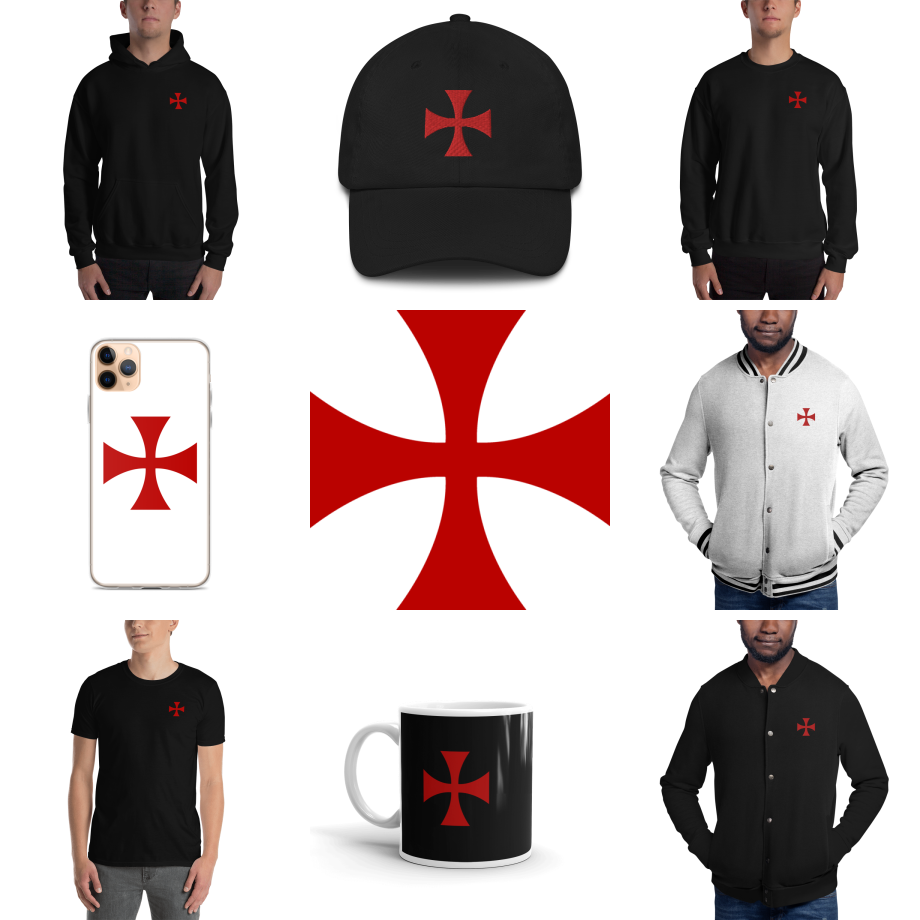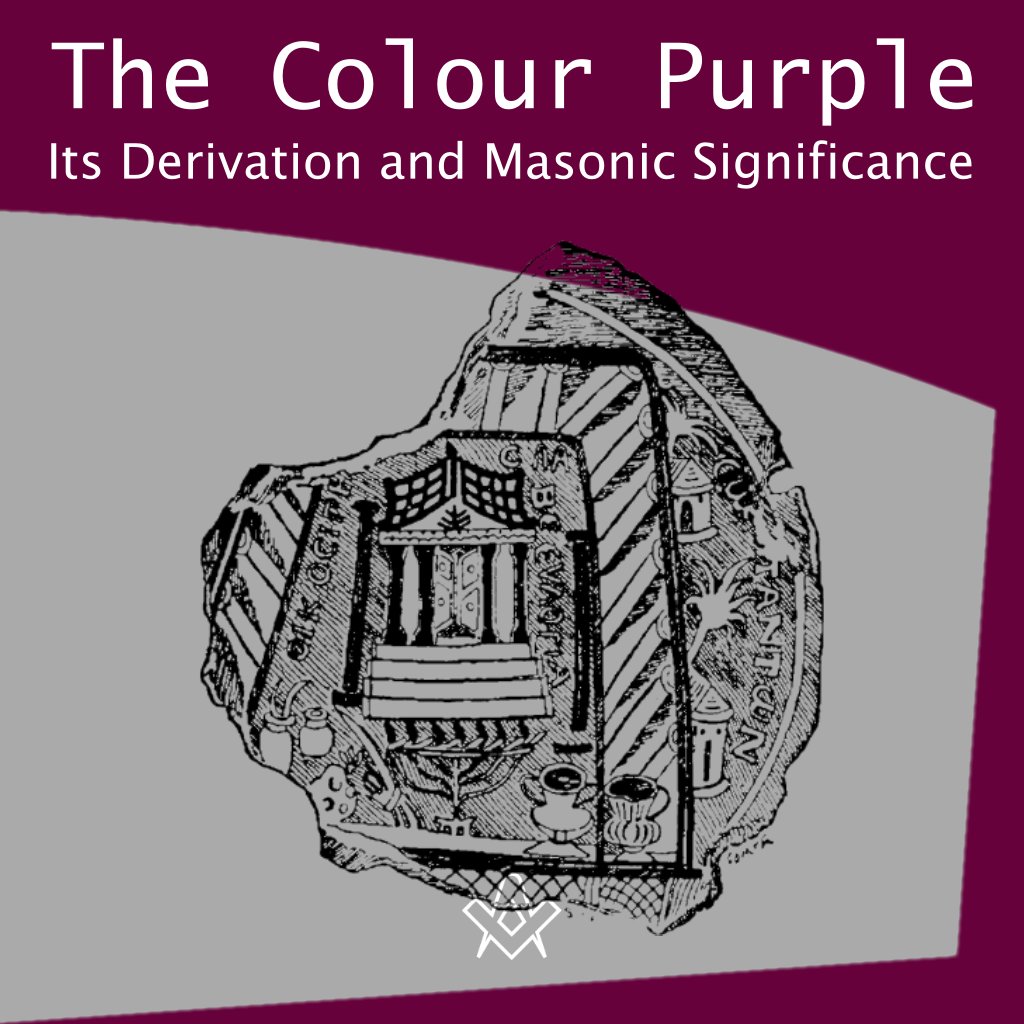It may be, in the years to come, on your head may rest the laurel leaves of victory, and on your breast, may hang jewels fit to grace the diadem of an eastern potentate; nay, more than these, with light added to the coming light, your ambitious feet may tread round after round of the ladder that leads to fame in our mystic circle, and even the purple of our Fraternity may rest upon your honoured shoulder.
But never again from mortal hands – never again until your enfranchised soul shall have passed upwards and inwards through the Pearly Gates shall an honour so distinguished, so emblematic of all purity and innocence, be conferred upon you, as that which we now bestow.
The foregoing is a familiar part of the lecture given to the newly initiated Freemason on his being invested with the distinguishing badge of an entered apprentice Mason – the spotless, white lambskin apron.
Any man entering through the pillars of Freemasonry for the first time can be overawed by the occasion; and much of the ritual which he has just gone through will be forgotten until such time as he returns to witness and digest the initiation of the next candidate.

Patriarch Nicholas Mystikos baptizes Constantine VII Porphyrogennetos in 906.
IMAGE LINKED: wikimedia Attribution 4.0 International (CC BY 4.0)
One of the aspects of this particular lecture which must be quite puzzling to the initiate, is the reference to the colour purple.
Beyond purely artistic connotations or concerns, it is not a commonly-used word, although many will be familiar with expressions such as ‘the purple of commerce’ or ‘born in the purple‘, the latter denoting birth into royalty or imperial power.
In the context of the apron lecture, it is apparent that the colour is of significance in Freemasonry; and something which the candidate can aspire to.
It is axiomatic that the colour is descriptive of the higher echelons of Freemasonry, and that the candidate can only hope to learn the true significance of it on reaching the apex of the organisation; probably after a long number of years of dedication and hard work, or in Mason-speak, after years of labouring in the quarries.
However, there is no degree higher than that of Master Mason in ancient Craft Masonry, and so we must assume that the colour purple is indicative of a place of honour for those who have provided sustained and exemplary service to the Craft.
Some have ascribed the colour to Provincial or Grand Lodge officers, but then not all such bodies dress in purple; the Provincial and Grand Lodge office-bearers of Scotland for example dress in green.
So, what is the colour purple with regards to Freemasonry? The colour is certainly significant within the Royal Arch series of degrees being emblematical of Union. Bro. John Shroeder in his paper: ‘Colour Symbolism and Freemasonry‘ writes:
The combination of red and blue into purple or violet, is the colour of the York Rite Mark, Past, and Most Excellent Master degrees which fall between the degree of Master Mason and that of the Royal Arch.
Mackey (Albert G. Mackey) says that the colour purple in this case therefore symbolizes the close connection and harmony which should ever exist between these two portions of the Masonic System… Portal’s Symbolic Colours states that purple, in the profane language of colours, symbolizes constancy in spiritual combats because blue denotes fidelity and red, war.
We know that purple has always been an emblem of exalted office and purple the legendary colour of the robes of kings and high priests.
The purple dye at that time reportedly could only be produced by crushing a certain shellfish, murex, from Phoenicia, which made it very expensive and contributed to limiting its use.
[1]
Given the antiquity of Masonic tradition, Shroeder’s account (assisted by Mackey) of why the colour purple was used as an emblem of high office by ancient peoples, provides an explanation for the reference to ‘purple of our fraternity’ in Craft ritual, in addition to any other symbolic interpretation the colour may have.
When it comes to the question of the origins of Freemasonry; this author tends to agree with the more prosaic opinions of writers such as Robert L. D. Cooper, Curator of the Grand Lodge of Scotland Museum, who in his book ‘The Rosslyn Hoax’ writes:
Here lies the crux of the matter. None of the traditional histories of any of the branches of Freemasonry are, or were, intended to be taken literally.
Our forebears in all the Masonic Orders manufactured suitable ‘pasts’ for allegorical purposes.
They did so with romantic notions at heart but understood that these histories manufactured by, and for, themselves were not literal truths.
[2]

Jerusalem temple, solomon’s temple, third temple – by Johnreve (2010)
IMAGE LINKED: wikimedia Attribution 4.0 International (CC BY 4.0)
Speculative Freemasonry evolving from the operative stonemasons of the middle ages used rituals manufactured from the legends surrounding the building of King Solomon’s Temple, and which were not necessarily handed down from the great man himself.
However, other authors assert that Freemasonry does stretch back as far as these ancient times, and is a much less recent phenomenon than is suggested by Cooper and others; and of course, they are entitled to hold that view.
Phoenician Purple

Solomon and the Plan for the Temple, as in 1 Kings 6, illustration from a Bible card published by the Providence Lithograph Company
IMAGE LINKED: wikimedia Attribution 4.0 International (CC BY 4.0)
Most people are aware that Masonic ritual is derived from the legends surrounding the building or re-building of Solomon’s temple in Jerusalem. The three major figures in the story being King Solomon himself, Hiram, King of Tyre, and Hiram Abif.
Although each is referred to in the bible, some historians have actually cast doubt on whether some or all of these characters ever actually existed; but, from the point of view of Masonic ritual, as Cooper alludes, it hardly matters. It is from the legend of these three men and the building of their temple, that an explanation for the use of the colour purple in general, and in Freemasonry, may come.
We are told that the holy-of-holies within King Solomon’s temple, a place where only the High Priest could visit; and then, only once a year, was bedecked largely in purple; and it is surely of some significance that in the Supreme Council 33º of the Ancient and Accepted Scottish Rite of Freemasonry, ruling members wear a purple coloured hat; and the colour is prevalent in their assemblies.
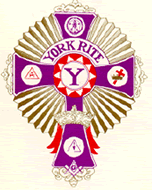
Moreover, The Order of the Purple Cross of York is considered to be the highest honour one can have bestowed upon him within the York Rite of Freemasonry in the United States of America.
Having established that purple is often used to denote high office or meritorious service to a particular cause, let us now explore why it is so used, and from where the colour derived such importance.
It was alluded to earlier, in the quotation from Shroeder’s piece on colour symbolism.

Phoenician trade routes. The cities in North Africa and Southern Europe represent the extent of the Phoenician sphere of influence, from their base in North Palestine.
IMAGE LINKED: wikimedia Attribution 4.0 International (CC BY 4.0)
Hiram, King of Tyre lived in a country known as Phoenicia, a strip of land on the Syro-Lebanese east coast of the Mediterranean Sea. The land was populated by Canaanites and a later immigrant group, known as the ‘Sea Peoples.’
The Phoenicians, who often referred to themselves as Canaanites, were a sea-faring race, known to sail well into the Mediterranean to peddle their wares.
Phoenicia, which is thought to derive from the Greek word Phoinikes meaning ‘land of the purple people’ or simply ‘the red race,’ consisted of a number of autonomous city states, which included Tyre.
The Phoenicians were a shrewd, entrepreneurial race of people and part of their business involved exporting wood to Egypt.
Among other trades, the Phoenicians also became involved in glass manufacture and glass-blowing.
The trade for which they were most famous was the manufacture of purple dye.
It is believed that the technique of obtaining this purple dye actually originated with the people of Ugarit, a town in Syria.
The large businesses of the day in that area gave their woollen cloth out to small home workers to be dyed.
The so-called ‘sea peoples,’ who later helped populate Phoenicia are purported to have learnt the secret of the dye and transported it to their new homeland.
Tyrian Purple
The dye was derived from the glands of a small sea-snail of the Purpiridae family which is found in abundance on the shores of the Mediterranean Sea.
The dye can be obtained much more easily these days; but in those times, it was achieved by incrementally mixing the snail’s secretions with lemon juice which eventually produced a purple dye.
It has been scientifically established that in order to make only a few grammes of the dye, over ten thousand snails had to have perished.
Because of this, the dye became a luxury, a much sought after commodity; which was snapped up by the rich and powerful of the day. In his book The Phoenicians Gerhard Herm makes the point that:
As a result, the Phoenician purple manufacture, unlike their glass industry, could never be for a mass public but only for a few of the rich.
The purple cloth from Tyre and Sidon was definitely a luxury article, which also explains why it was reserved for a long time for Kings, in Rome, for senators, and in later times for the most loyal servants of the German government, the chiefs of general staff.
A purple stripe was always a sign of high rank, and the colour itself a symbol of the highest authority, and for this idea too, the Phoenicians were responsible.
[3]
Phoenician Temples
We now move on to the connection between the so-called purple people and their influence on Masonic traditions and symbolism. When King David defeated in battle, a group of quarrelling Philistine Kings, thus forming the new state of Israel, Hiram, King of Tyre realised that he could trade with this fledgling state across the border; not only the goods and produce of his country, but also the vast experience and knowledge of his tradesmen.
He sent samples of his wares to David, and the latter, eager to encourage the development of his own country accepted the offer gratefully.
It would appear that David was anxious to make the small Jebusite town in which he lived, Jerusalem, a religious and political capital, and to that extent wished to build a religious temple such as those built by the Phoenician king himself.
However, David died around 961 BC and did not see the completion of his vision.
Power transferred to his son King Solomon who continued to trade with Hiram, King of Tyre, and continued apace with the building of the Temple.
Solomon was able to supply a large labour force and materials but relied on the Tyrians for the supply of master craftsmen to carry out the architecture and stonework of the building.

Baal with Thunderbolt – between late 15th century and early 13th century BC
IMAGE LINKED: wikimedia Attribution 4.0 International (CC BY 4.0)
The Phoenicians worshipped pagan deities they called Baal (Lord). The main Phoenician deity was Baal, son of the Canaanite God El, and King Hiram was seen by his people as its earthly manifestation, and they referred to the King as Baal Tyre.
Baal was considered a fertility God and Baal worship involved the despicable practice of child sacrifice and licentious rites using temple prostitutes.
Another name for Baal was Melqart; and we know that there was a temple of Melqart in the centre of Tyre, which was rebuilt for King Hiram by his chief builder Hiram Abif or Huram Abi.
This is the master craftsman Hiram of Tyre sent to build King Solomon’s temple in Jerusalem.
Some historians claim that Solomon’s temple was built according to the model of the Melqart temple; and there is some evidence to suggest this may be the case.
Herm also writes; quoting Greek historian Herodotus, who visited Tyre in 450BC:
There was another detail of the great building [Solomon’s Temple] which, like the division of the rooms was typical of Phoenician architecture: the pillars of Boaz and Jachin which towered skywards in the outer courtyard on the left and right of the entrance to the temple.
Neither had any connection with any part of the Jewish liturgy, but similar designs were found in Canaanitish temples.
Herodotus tells us, for instance, that the temple of Melqart at Tyre also had two pillars of the same kind, ‘one of pure gold, the other of emerald which shone brilliantly at night’.
Besides which, bases of similar pillars have been found in a temple of Baal in Cyprus and in various Palestinian towns such as Samaria, Megiddo, and Hazor.
The decoration which covered the obelisk-like forms was probably derived from Egyptian prototypes, as Phoenician architecture in general was strongly influenced by the Nile.
[4]
As stated earlier, the Phoenicians were distant travellers and entrepreneurial businessmen, and another of their enterprises was copper mining in Cyprus, where a two-pillared temple of Baal has been excavated.
Masonic writer C. Bruce-Hunter compared descriptions of Phoenician temples with the biblical description of the pillars known as Boaz and Jachin which stood outside Solomon’s Temple; these were not structural pillars, but appeared to serve a ritual function.
He contends that the situation of two pillars outside the front of temples was not uncommon in that part of the world at the time.
He also concludes that the pillars of Solomon’s Temple were likely modelled on the Melqart temple. [5]
mage of a 3rd-century (AD) glass bowl which depicts Solomon’s Temple. Jachin and Boaz are the detached black pillars shown on either side of the entrance steps. From Encyclopaedia Biblica, 1903.
IMAGE LINKED: wikimedia Attribution 4.0 International (CC BY 4.0)
In 1939, Theologian R.B.Y Scott made similar observations regarding the pillars:
Others have held that that the pillars were phalli, or cosmic pillars, or symbols of the two mountains from between which the sun-god came forth.
Hollis’ discussion of the solar elements in the plan of Solomon’s temple suggests some connection with Egyptian obelisks, early forms of which were surmounted by a disc or sphere, like the bowls or globes at the top of the Jerusalem pillars.
We must expect mixed influences in the plan of Solomon’s temple, and it is impossible to say anything more definite than that the twin entrance pillars were a characteristic feature of temples of the period, when the religions of many peoples were related to a single underlying pattern; and that they had cultic significance.
[6]
He goes on to discuss then current, and quite possibly Masonically profane explanations of the pillars by various scholars.
The only new suggestion made in this paper concerns the curious names ‘Jachin’ and ‘Boaz’, for which no satisfactory explanation has been forthcoming.
The idea of Gesenius and Ewald that, because these words are found elsewhere in the Old Testament as proper names, they may be the names of donors or builders, merits no more than mention.
Sayce saw in the names a reference to the gods represented by the twin pillars of Babylonian Temples, Ningis-zida and Tammuz; he suggests that ‘Jachin’ is a translation of the first and ‘Boaz’ a corruption of the second.
The Jerusalem pillars may have represented deities, but this derivation of the names is unconvincing. The same must be said of an early suggestion of S.A. Cook’s that ‘Jachin’ might be a Phoenician equivalent of Yahweh, and ‘Boaz’ a corruption of Baal.
If a pair of deities is indicated, we should expect them to be masculine and feminine, as Baal and Ashtarte, or Yahweh and Anath.
Kittel thinks that the pillars may perpetuate the names of masseboth which had stood on the temple site before the time of David. Klostermann renders the names as predicates of Yahweh whom the pillars symbolised, ‘the one who stands firm and defies’. Cheyne says that “Jachin” expresses the immovableness of the mountain of the gods and that ‘Boaz’ is a corruption of Baal-zebul.
[7]
In addition to the two pillars outside the front entrance; Solomon’s temple shared other characteristics of Phoenician-designed temples, in that it had an outer hallway or ulam; a central open courtyard or heikal; an inner holy of holies or debir; and an annex for temple staff.
Solomon clearly had no objections to his temple being built by the Phoenicians in the likeness of their own masterpieces, and of course the real genius behind the construction was the Phoenician native Hiram Abiff.
It may be of some concern to some Freemasons, that King Solomon’s temple was substantially built by a race of people who were considered to be heathen idolaters; people who practiced child sacrifice; and, who engaged in depraved temple rituals with prostitutes.
Indeed, although he is said to have worshipped the monotheistic Hebrew God Yahweh, and built altars to him; King Solomon himself is said to have been occasionally drawn into the worship of Baal, usually through the undue influence of some of his many wives or concubines.
Without entering the debate here, or going into any great detail, Freemasons today are only too aware of the attempts by some writers over the years to ascribe pagan elements to Masonic ritual, particularly with respect to the Royal Arch Degree.
In this regard, the following from the famous American Freemason Albert Pike is instructive:
Each Mason will apply our symbols and ceremonies according to his faith.
In no other way could Masonry possess its universality, that character which has ever been peculiar to it from it’s origin, and which enabled two kings, worshippers of different Deities, to sit together as Grand Masters while the walls of the first Temple arose; and the men of Gebal, who bowed down to the Phoenician gods, to work by the side of the Hebrews, to whom those gods were an abomination.
[8]
Herm gives this ancient business association a modern perspective when he writes:
The teamwork between Tyre and Israel can therefore be defined in almost biological terms.
It was not an alliance or syndicate, but a symbiosis- two different organisms living together for the mutual benefit of each, like that between hermit-crabs and sea anemones.
Needless to say, things have altered a lot since. The present-day descendants of Solomon and Hiram, the Israelis and Lebanese, face each other across barbed-wire barricades and minefields.
And anyone who imagines that in a country where the past has so much bearing on the present, as it does in the near East, one or other side might occasionally remember the good old days and wish them back, will be sadly disappointed.
[9]
Of course, King Solomon, and his business partners, the Phoenicians, have to be viewed from the perspective of their time and place in history.
Moreover, let us not forget the cautionary advice of our hard-nosed historians, when they admonish us not to take Masonic ritual too literally.
Given that Craft ritual is predicated on a traditional history in which the main characters are from pre-Christian times, and who were known to engage in pagan practices (the word pagan simply means pre-Christian), it is perhaps not surprising that outsiders might wish to attach such a label to Freemasonry.
But should we concern ourselves with this? When all is said and done, is the Masonic story not one concerning the ascent of man from his native darkness, to his spiritual, dare to say, Christian enlightenment?
Footnotes
Resources
[1] John Shroeder: ‘Colour Symbolism and Freemasonry’, as reproduced in California Freemason Online: http://www.freemason.org/cfo/spring_2004/color.htm.
[2] Robert L.D.Cooper, The Rosslyn Hoax, Lewis Masonic, (2006), 251.
[3] Gerhard Herm, The Phoenicians’- The Purple Empire of the Ancient World – translated by Caroline Hillier, Book Club Associates, London, (1975), 81.
[4] Ibid: 90-91.
[5] C. Bruce Hunter, ‘Hiram and the Temple’, Masonic Magazine, Issue No. 6, winter (2006), 22-27.
[6] R.B.Y. Scott: ‘The Pillars Jachin and Boaz’, Journal of Biblical Literature, Vol. 58, No. 2, (June 1939), 143-149; Courtesy of JSTOR Archives.
[7] Ibid
[8] Christopher Knight & Robert Lomas: The Book of Hiram, Arrow Books (2004), 527.
[9] Herm: 99 -100.
Article by: Kenneth C. Jack
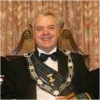
Kenneth C. Jack FPS is an enthusiastic Masonic researcher/writer from Highland Perthshire in Scotland.
He is Past Master of a Craft Lodge, Past First Principal of a Royal Arch Chapter, Past Most-Wise Sovereign of a Sovereign Chapter of Princes Rose Croix.
He has been extensively published in various Masonic periodicals throughout the world including: The Ashlar, The Square, The Scottish Rite Journal, Masonic Magazine, Philalethes Journal, and the annual transactions of various Masonic bodies.
Kenneth is a Fellow of the Philalethes Society, a highly prestigious Masonic research body based in the USA.

The Rosslyn Hoax
By: Robert L.D.Cooper
The Rosslyn Hoax? Would you like to know the truth about Rosslyn Chapel?
Since the publication of the novel “The Da Vinci Code” huge numbers of non-Masons have been asking questions and putting forward theories about Freemasonry ? especially Freemasonry in Scotland, and its alleged connections with the Knights Templar and Rosslyn Chapel.
This book is a product of the research undertaken to answer those thousands of questions. The results will surprise a lot of people.
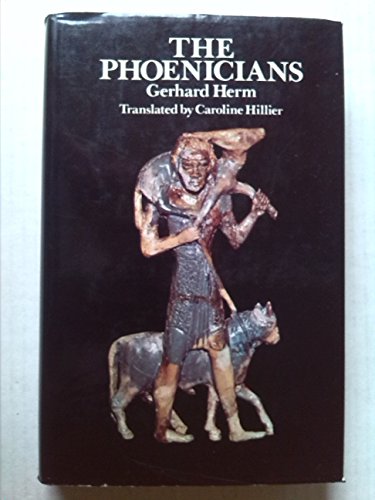
The Phoenicians: The Purple Empire of the Ancient World
By: Gerhard Herm
World of Books is the UKs largest seller of used books online. We sell quality used books at competitive prices to millions of customers worldwide each year.
Established by a group of dedicated book lovers, with an ethos to do good, over the past 10 years World of Books has grown to hold over 3 million in stock. We are a circular economy, for profit company that supports charities and protects the planet by enabling more goods to be reused.
We do not believe that books should only be read once or have a single owner. By choosing to buy a great value second hand book, you are helping to continually recycle and share the love of literature in rereading and reusing it. Our prices are low to help millions of used books find new homes in over 190 countries worldwide every year.
World of Books purchases significant volumes of donated books from UK charities, taking the titles they do not want or have not got space for. Our customers are helping to support good causes too- boosting revenues for charities and saving waste disposal costs. Our business model has generated over £12m for charities in the last 5 years.
We consider ourselves pioneers in the re-use and recycling of unwanted books, recycling 27,000 tonnes of books each year, equivalent to 500,000 trees.
We do our best to provide good quality books but there is no escaping the fact that it has been owned and read by someone else before you.
It may well show signs of wear and tear, however each one of our books is hand-checked by our dedicated team for defects before shipping. We hope you enjoy browsing through our titles today.

THE HIRAM KEY
By: CHRISTOPHER KNIGHT, ROBERT LOMAS
The Hiram Key is a book that will shake the Christian world to its very roots. When Christopher Knight and Robert Lomas, both Masons, set out to find the origins of Freemasonry they had no idea that they would find themselves unraveling the true story of Jesus and the original Jerusalem Church. As a radically new picture of Jesus started to emerge, the authors came to the startling conclusion that the key rituals of modern Freemasonry were practiced by the early followers of Jesus as a means of initiation into their community.
Recent Articles: Kenneth C. Jack
 Observations on the History of Masonic Research Archaeology is often associated with uncovering ancient tombs and fossilized remains, but it goes beyond that. In a Masonic context, archaeology can be used to study and analyze the material culture of Freemasonry, providing insight into its history and development. This article will explore the emergence and evolution of Masonic research, shedding light on the challenges faced by this ancient society in the modern world. |
 Anthony O'Neal Haye – Freemason, Poet, Author and Magus Discover the untold story of Anthony O’Neal Haye, a revered Scottish Freemason and Poet Laureate of Lodge Canongate Kilwinning No. 2 in Edinburgh. Beyond his Masonic achievements, Haye was a prolific author, delving deep into the history of the Knights Templar and leaving an indelible mark on Scottish Freemasonry. Dive into the life of a man who, despite his humble beginnings, rose to prominence in both Masonic and literary circles, leaving a legacy that continues to inspire. |
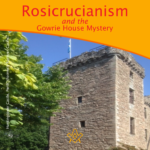 Rosicrucianism and the Gowrie House Mystery Unearth the mystifying intersections of Rosicrucianism and the infamous Gowrie House Mystery. Dive into speculative claims of sacred knowledge, royal theft, and a Masonic conspiracy, harking back to a fateful day in 1600. As we delve into this enthralling enigma, we challenge everything you thought you knew about this historical thriller. A paper by Kenneth Jack |
 Thomas Telford's Masonic Bridge of Dunkeld Of course, there is no such thing as a ‘Masonic Bridge’; but if any bridge is deserving of such an epithet, then the Bridge of Dunkeld is surely it. Designed by Scotsman Thomas Telford, one of the most famous Freemasons in history. |
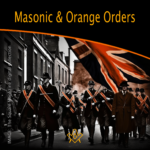 The masonic and orange orders: fraternal twins or public misperception? “Who’s the Mason in the black?” |
 Kenneth Jack's research reveals James Murray, 2nd Duke of Atholl – the 'lost Grand Master' |
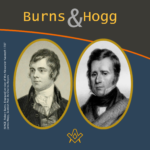 An Oration delivered to the Annual Burns and Hogg Festival, at Lodge Canongate Kilwinning, No. 2, Edinburgh, on 24 January 2018. By Bro. Kenneth C. Jack, FSAScot FPS, Past Master, Lodge St. Andrew, No. 814, Pitlochry. |
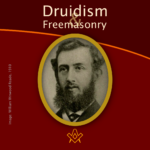 William Winwood Reade was a Scottish philosopher, historian, anthropologist, and explorer born in Crieff, Perthshire, Scotland. The following article by Kenneth Jack, provides some hints that William may have been a Freemason, but there is presently no definitive evidence he was. |
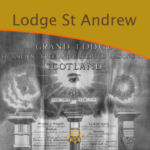 What's in a name? A brief history of the first Scottish Lodge in Australia - By Brother Kenneth C. Jack, Past Master, Lodge St. Andrew, No. 814, Pitlochry |
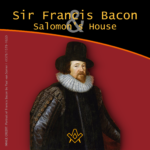 Sir Francis Bacon and Salomon’s House Does Sir Francis Bacon's book "The New Atlantis" indicate that he was a Rosicrucian, and most likely a Freemason too? Article by Kenneth Jack |
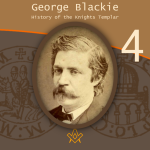 George Blackie – The History of the Knights Templar P.4 The final part in the serialisation of George Blackie's 'History of the Knights Templar and the Sublime Teachings of the Order' transcribed by Kenneth Jack. |
 George Blackie – The History of the Knights Templar P.3 Third part in the serialisation of George Blackie's 'History of the Knights Templar and the Sublime Teachings of the Order' transcribed by Kenneth Jack. |
 George Blackie – The History of the Knights Templar P.2 Second part in the serialisation of George Blackie's 'History of the Knights Templar and the Sublime Teachings of the Order' transcribed by Kenneth Jack. |
 George Blackie – The History of the Knights Templar P.1 First part in the serialisation of George Blackie's History of the Knights Templar and the Sublime Teachings of the Order – by Kenneth Jack |
 Little known as a Freemason, Bro Dr Robert ‘The Bulldog’ Irvine remains a Scottish rugby legend, and his feat of appearing in 10 consecutive international matches against England has only been surpassed once in 140 years by Sandy Carmichael. |
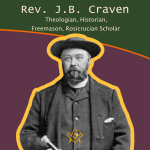 Rev. J.B. Craven: Theologian, Historian, Freemason, And Rosicrucian Scholar Archdeacon James Brown Craven is one of those unsung heroes of Scottish Freemasonry about whom very little has been previously written – here Kenneth Jack explores the life and works of this remarkable esoteric Christian. |
 Discover the powerful family of William Schaw, known as the 'Father of Freemasonry' |
 This month, Kenneth Jack invites us to look at the life of Sir William Peck; - astronomer, Freemason and inventor of the world's first electric car. A truly fascinating life story. |
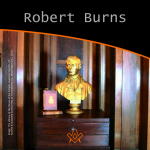 A Tribute to Scotland's Bard – The William Robertson Smith Collection With Burns' Night approaching, we pay tribute to Scotland's most famous Bard – The William Robertson Smith Collection |
 The Joy of Masonic Book Collecting Book purchasing and collecting is a great joy in its own right, but when a little extra something reveals itself on purchase; particularly with regards to older, rarer titles.. |
 Masons, Magus', and Monks of St Giles - who were the Birrell family of Scottish Freemasonry? |
 The 6th Duke of Atholl - Chieftain, Grand Master, and a Memorial to Remember In 1865, why did over 500 Scottish Freemasons climb a hill in Perthshire carrying working tools, corn, oil and wine? Author Kenneth Jack retraces their steps, and reveals all. |
 Charles Mackay: Freemason, Journalist, Writer Kenneth Jack looks at life of Bro Charles Mackay: Freemason, Journalist, Writer, Poet; and Author of ‘Tubal Cain’. |
 A Mother Lodge and a Connection Uncovered, a claim that Sir Robert Moray was the first speculative Freemason to be initiated on English soil. |
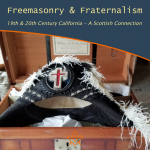 What is it that connects a very old, well-known Crieff family, with a former President of the United States of America? |
 The life of Bro. Cattanach, a theosophist occultist and Scottish Freemason |
 The Mysterious Walled Garden of Edzell Castle Explore the mysterious walled garden steeped in Freemasonry, Rosicrucianism, and Hermeticism. |
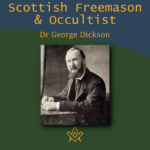 Dr. George Dickson: Scottish Freemason and Occultist Bro. Kenneth explores the life of Dr George Dickson a Scottish Freemason and Occultist |
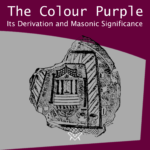 The Colour Purple - Its Derivation and Masonic Significance What is the colour purple with regards to Freemasonry? The colour is certainly significant within the Royal Arch series of degrees being emblematical of Union. |
 Bridging the Mainstream and the Fringe Edward MacBean bridging mainstream Freemasonry with the fringe esoteric branches of Freemasonry |
 Freemasonry in the Works of John Steinbeck We examine Freemasonry in the Works of John Steinbeck |
 Renegade Scottish Freemason - John Crombie Who was John Crombie and why was he a 'renegade'? |
 Scottish Witchcraft And The Third Degree How is Witchcraft connected to the Scottish Third Degree |
masonic knowledge
to be a better citizen of the world
share the square with two brothers

click image to open email app on mobile device
